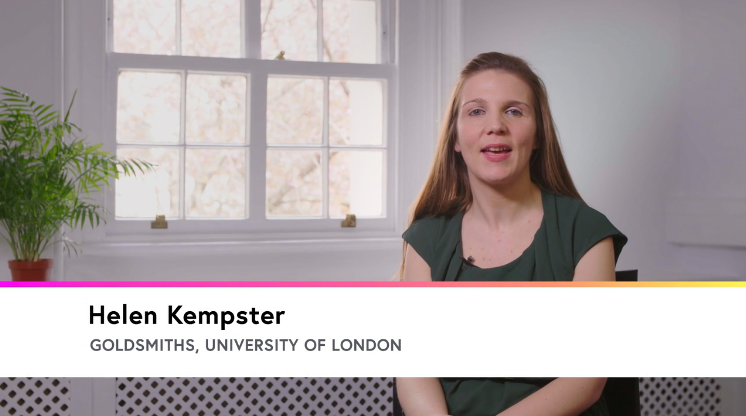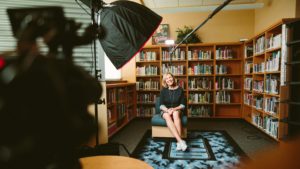
Online teaching is an ever-growing implement in the education world. What started with the invention of the internet has expanded to something commonplace in most modern Universities. Not only this, MOOCs are a becoming a widespread tool for self-teaching.
First of all, what is a MOOC? The acronym stands for Massive Open Online Course—basically a free Internet class. The first MOOC was created in 2008, and began to grow popularity around 2012. While MOOC is an organisation in itself, improving your video by commissioning a professional can pertain to any situation in which you will need to film yourself teaching.
 With any educational video, and certainly, with any video you make, you want the content to be engaging. This can be challenging for any subject, but more so when you are trying to introduce foreign, and often complex, subject matter to an audience. The good news is, educational video/MOOCs can be so much more than a boring talking head.
With any educational video, and certainly, with any video you make, you want the content to be engaging. This can be challenging for any subject, but more so when you are trying to introduce foreign, and often complex, subject matter to an audience. The good news is, educational video/MOOCs can be so much more than a boring talking head.
As we have stated in one of our previous articles, education is now an industry in its own right, with an identifiable market and an ever-growing body of consumers. Online courses aren’t just limited to schools anymore, either: businesses are often turning to video to educate their employees. Thus, anything you present online while representing an institution needs to be polished and attention-retentive.
With this in mind, let’s explore the benefits of commissioning your next MOOC to a professional.
Benefits
This is an example of a well-shot introduction to an online course. Notice how it utilises animation, cutaways of the University, a name banner, and the use of text slides to keep the video visually pleasing and relevant.
Goldsmith’s e-Learning Video
Animation
Animation is an excellent way of explaining any abstract content you might be introducing to your students. Say you are teaching a course on something that can’t necessarily be seen–such as the intimacies of astronomy–you can use computer-generated images to represent what you are trying to describe.
It can also be used in your name banner and title, to give you (the lecturer) credibility. The cutaways to campus—which could potentially be cutaways to other relevant visuals to your subject matter—keep the video moving along.
Professional Production
Professional sound, lighting, and setup can make a big difference in terms of making the content more appealing and easier to understand. Good lighting helps form a connection between the subject and the audience: it will help put the students at ease, so they can focus on the content rather than on the lecturer’s appearance. Having decent sound is like housekeeping in a hotel: you only notice when it’s done poorly. If audio is not recorded properly, it can distract from the subject matter and impede the learner from retaining information.
Location for filming an online course is also more important than one may realise. It is easy to assume that an online class would be filmed in a classroom, but there are factors to consider. You want to select a location which is quiet and will leave you undisturbed during the interview. You will want to allow some space behind the subject and the wall: this will stop the subject from looking too cramped or closed in.
Now imagine if this were shot as an interview only, in someone’s bedroom, on a web-cam and laptop microphone. Wouldn’t be nearly as appealing, would it? Having a MOOC or online course video shot professionally can not only keep your learners engaged but also increase your institution’s credibility.
Putting the Subject at Ease
In addition to having pleasing visuals and well-recorded audio, a professional production team will be able to make academics–who may not be used to being in front of a camera–relaxed, and elicit a natural performance. Being filmed can be a stressful experience, especially if it is the subject’s first time. The main goal will be to make sure you are conveying information that the viewer can understand, and that is especially difficult to do when you are focused on how you are acting. An experienced director and crew will be able to talk the lecturer through the shoot to catch their best possible performance.
Having an introduction to your MOOC is also a great idea. This will give potential students the flavour of the lecturer’s personality and an idea of what to expect. This way, if they are debating between several courses, they get a good idea of the type of class they will be committing to. An experienced producer will be able to help you put together this summary for your potential students and give you more confidence moving forward into the actual lectures.
Conclusion
 As discussed above, there are several benefits to having a well-shot (and edited) educational video. A professional team can put all involved at ease, and help you put together a successful series of videos. Viewer engagement is boosted, visuals assist with more comprehensive learning, and the use of animation and appropriate editing/demonstrations keep the video appealing. Additionally, the added interest will help spark retention in students. Make your MOOC an online class that stands out with professional video production.
As discussed above, there are several benefits to having a well-shot (and edited) educational video. A professional team can put all involved at ease, and help you put together a successful series of videos. Viewer engagement is boosted, visuals assist with more comprehensive learning, and the use of animation and appropriate editing/demonstrations keep the video appealing. Additionally, the added interest will help spark retention in students. Make your MOOC an online class that stands out with professional video production.
